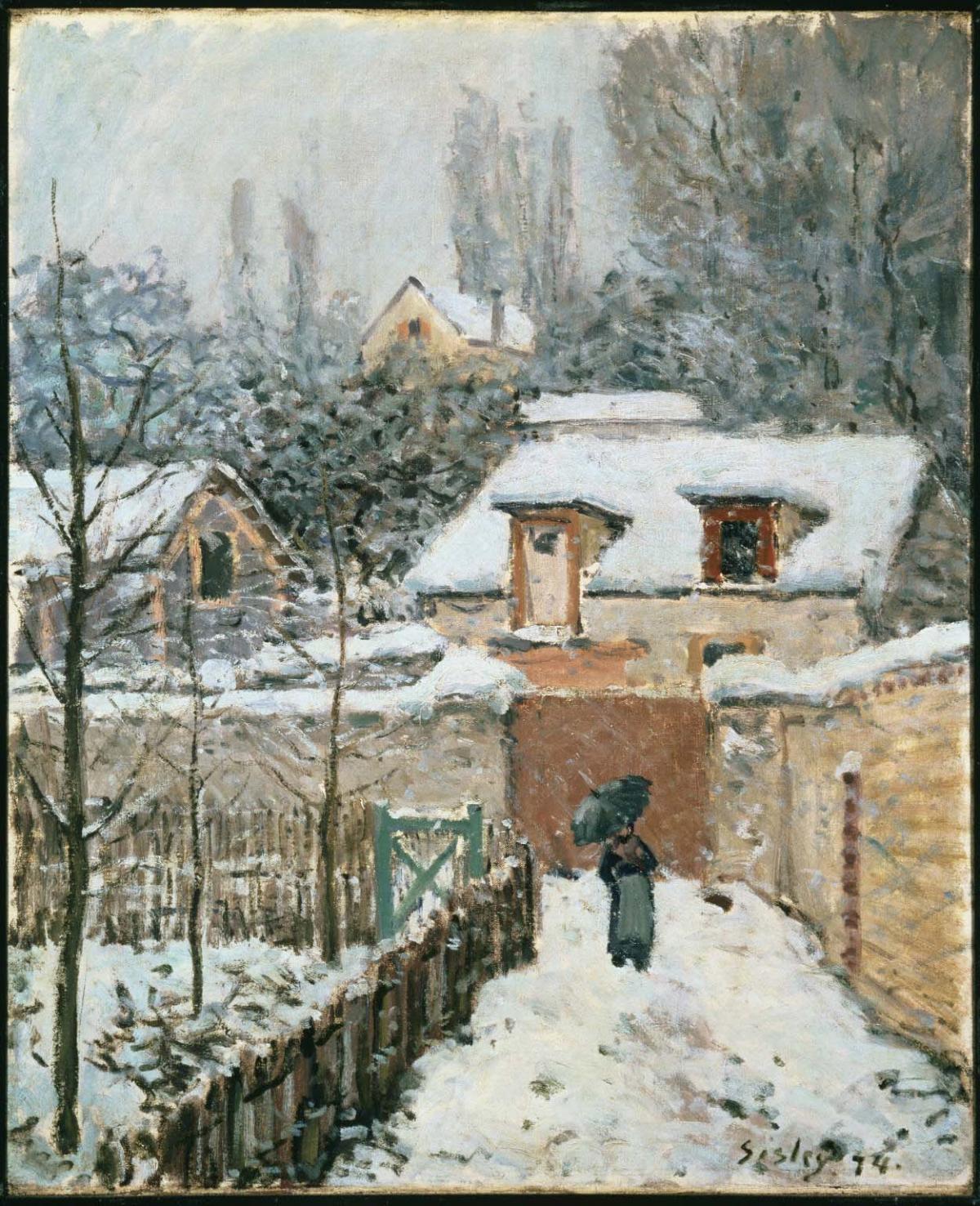Snow at Louveciennes
Alfred Sisley ( 1874 )

Alfred Sisley’s Snow at Louveciennes captures the silence and serenity of snowfall in a village. It reflects the artist’s mature period of the 1870s, when he created his “lightest, most luminous and lyrical paintings.” Snow scenes were an ideal motif for impressionist: the softening and blurring of forms and the dense atmosphere required a muted palette to capture the myriad tones of reflected light and the softened contours of the landscape.
Duncan Phillips’s early writings as well as his acquisitions indicate his long-standing interest in Sisley. The painting that Phillips retained for the collection exemplifies the “realm of enchantment” he sought in art during the museum’s formative years. In 1926 he wrote, “Snow at Louveciennes, with its hush of snowflakes falling over roofs and garden walls, is a lyric of winter, enchanting both in its mood and in its tonality of tenderly transcribed ‘values’.”